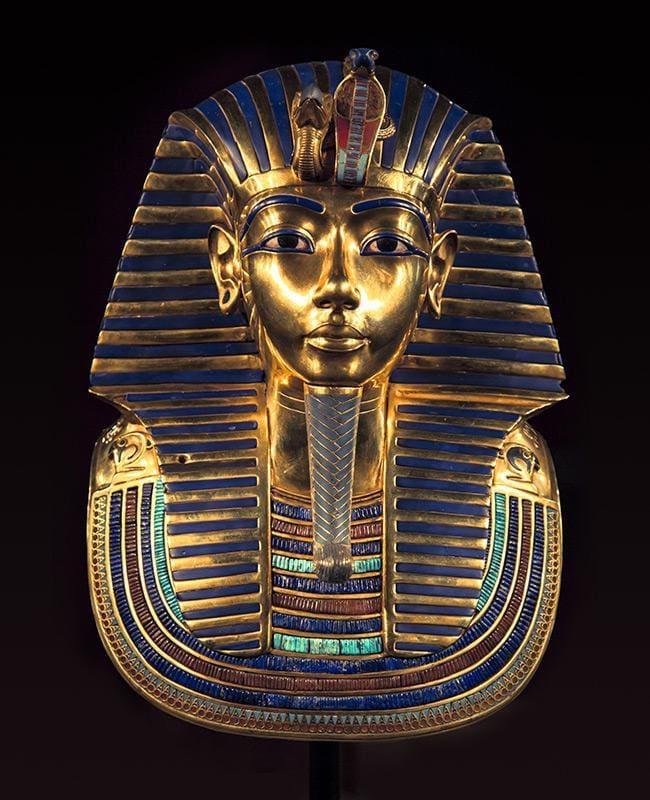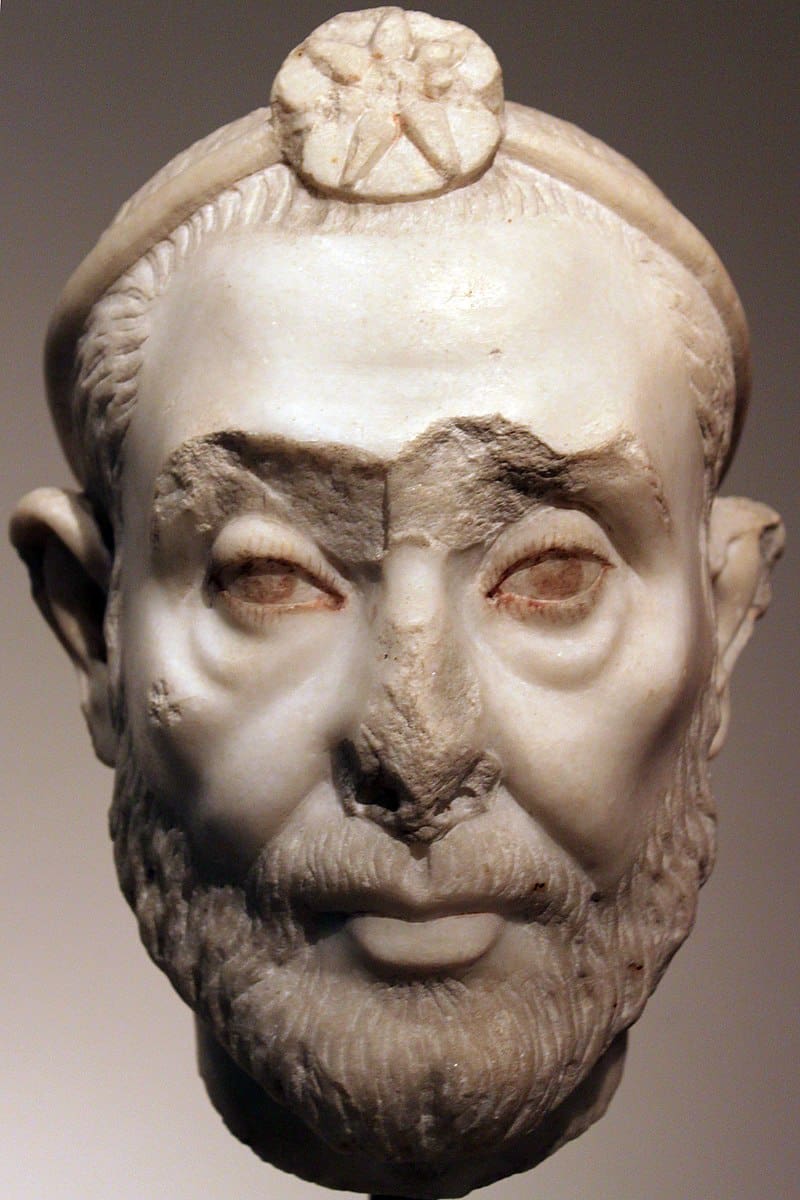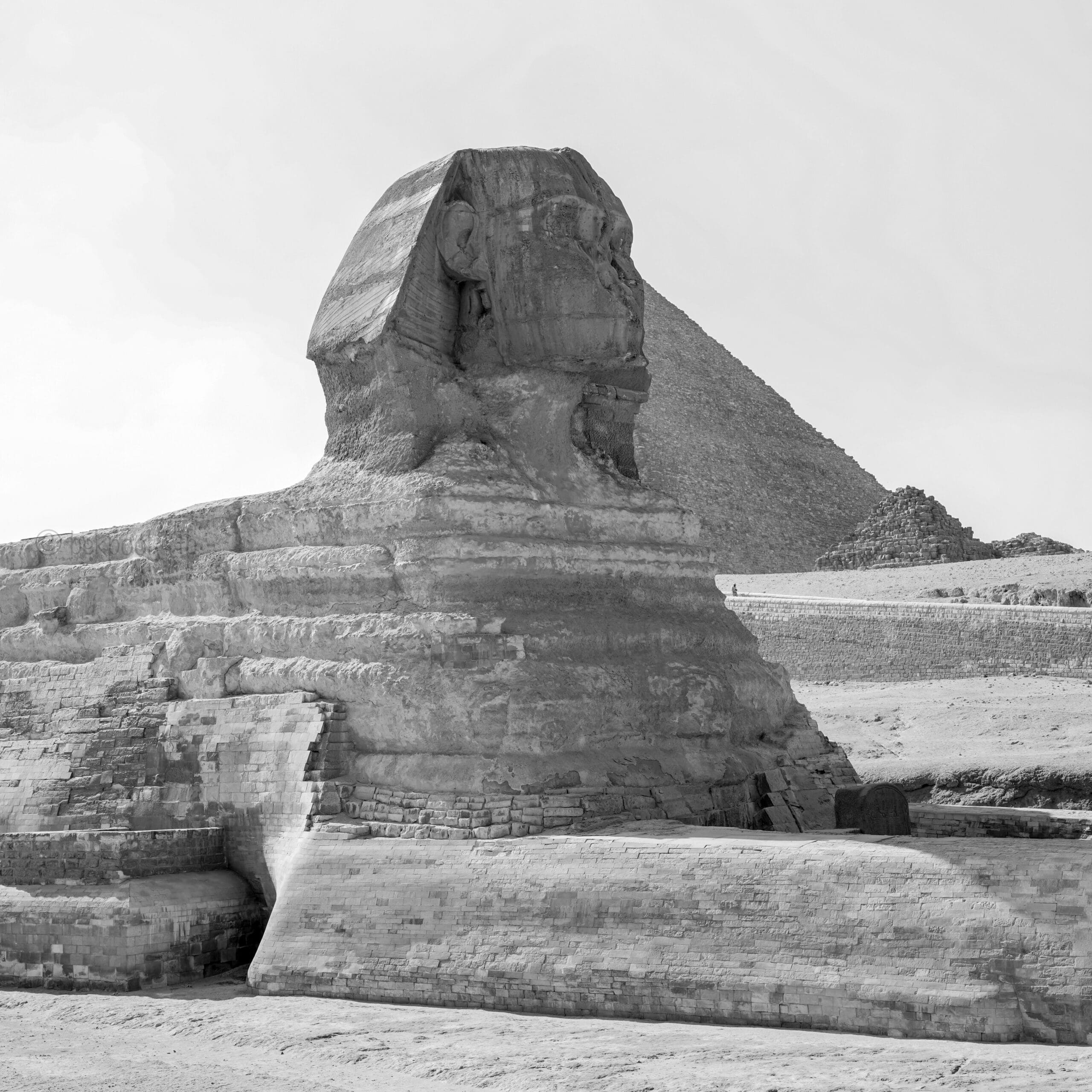FAQ About Egypt
Frequently Asked Questions
You have questions – we have some answers. Over the years we have received many burning inquiries during our learning events and in our email box. Here we try to address some of the mysteries about Ancient Egypt that may have you perplexed – and wondering!
When did Ancient Egypt begin and end?
During the reign of King Narmer (c. 3100 BCE), Upper and Lower Egypt were united which marked the beginning of the empire of Ancient Egypt. It officially ended in 30 BCE with the death of Cleopatra VII and the coming of the Romans. After that it was a province of the Roman empire until it was conquered by the Arabs in 641 CE.
What is the Ancient Egyptian Timeline?
Ancient Egypt is divided into four major periods: Old Kingdom (2670-2168 BCE), Middle Kingdom (2010-1640 BCE), New Kingdom (1548-1086 BCE) and the Late Period (664-332 BCE). These four periods are interrupted by three intermediate periods: First Intermediate Period (2168-2010 BCE), Second Intermediate Period (1640-1548 BCE), and Third Intermediate Period (1086-664 BCE).
It was Manetho, an Egyptian priest who created these timelines with 4 major periods and 31 dynasties. He lived in the 4th century BCE (300’s) and was commissioned by Ptolemy II Philadelphus to compile a great history of Egypt. Back in ancient times, people did not know they were living in, say, the 5th dynasty or the Old Kingdom – only that they were living during the reign of a certain king.
What caused the fall of Ancient Egypt?
During the Third Intermediate Period (1086-664 BCE) Ancient Egypt suffered a civil war which resulted in the division of Egypt into two regions, north and south. This division left Egypt vulnerable to external enemies. Ancient Egypt was invaded by the Assyrians in 617 BCE, Persians in 525 BCE, Greeks in 332 BCE, and, finally, Romans in 30 BCE. All these invasions, internal divisions, and lack of power make the empire unstable and erratic. Then there is the matter of climate change, natural disasters, low Niles – and a changing world. 3000 years though is an admirable age for a civilization.
Why did Ancient Egypt last so long?
There are many reasons to take into consideration when it comes to the success of Ancient Egypt´s civilization. One success factor was its ability to adapt to the harsh conditions of the Nile River valley and use these dramatic conditions to their advantage, especially regarding agriculture. Their knowledge of the Nile River and their flooding seasons make them able to support a denser population in comparison with other ancient civilizations through surplus crops – and trade.
How do we know so much about Ancient Egypt?
The decipherment of hieroglyphic script 20, some years after the discovery of the Rosetta Stone in 1799, opened a window into our understanding of Ancient Egypt – and launched the field of Egyptology. The fact that the ancient Egyptians documented everything – and left us so many written and inscribed documents, temple walls, coffins, ostracon – on different topics from accounting and personal annals to religious prayers – has helped us to unveil different aspects of this ancient civilization. With our ability to read the hieroglyphs an hieratic/demotic texts (shorthand) today, we have learned about their kings, their economic system, their gods and goddesses, their festivals, wars, invasions and daily life. The Egyptian scribes documented the events, transactions, religious thought, and literature of their society in such great detail that have been key in the study of Ancient Egypt. But there are more sources apart from the written documents that Egyptologists have used to learn more about this culture.
The fact that much of their material culture and art have been beautifully preserved – paint and all – is another reason we know so much. This is thanks to the hot dry climate of Egypt which has allowed mortuary structures, paint, artifacts, coffins – and even mummies, to remain in an amazing state of preservation over the millennia. Apart from the climate, special recognition must be given to the magnificent builders of antiquity – pyramids, temples, and colossi – whose works were so enduringly constructed that they have lasted the ages. All these factors have allowed for these constructions and objects to be preserved in our contemporary days and have allowed us to study them in great depth and extract different knowledge from them.
Lastly, the great fame that Ancient Egypt enjoyed in the past has meant that the knowledge, art and works have been revered, preserved and passed down from culture to culture throughout all history. For example, Ancient Greeks and Romans had a great reverence for ancient Egyptian society and made many efforts to preserve it: many authors travelled to Egypt and documented and described every detail they saw and experienced. They also imitated their art, sculpture, and monuments, among many other things.
Were the Pyramids built by ancient aliens?
No. The major pyramids on the Giza plateau date to c. 2500 BCE (within a 75 year period) – and were built by organized teams of contracted Egyptian labourers from all over the country working in 2-3 month shifts. In 1990, Dr. Mark Lehner and Dr. Zahi Hawass discovered a large workmen’s village on the plateau where workers were housed, fed, cared for if injured – and even given respectful burials.
Were the pyramids built by slaves?
No, there is archaeological evidence of builders’ settlements in the vicinity of the pyramids. They were paid in the form of housing, food, and drink. In the pyramids of Giza, we have even found mathematical accounts that the foremen made to pay the workers.
How were pyramids in Ancient Egypt built?
Even though, Ancient Egypt did not have the technology we have nowadays they were ingenious in their engineering using the raw materials of the land. The ancient Egyptians used a sloping ramp of brick, earth, and sand to increase the height and length as the pyramid rose. The materials employed to build the pyramids came from nearby quarries so transporting them was easier. The stone blocks were dragged down the ramps thanks to a sled that was attached with ropes to wooden poles.
Who broke the Sphinx’s nose?
No one can be certain who – but it was not Napoleon’s men using it for target practice. Most likely it happened between 1600 and 1750. We do know it was pried off using iron rods – as there are boring holes apparant just over the nose and near one nostril.
Why are so many other statues from Ancient Egypt broken or destroyed?
During Late Antiquity, many statues from Ancient Egypt were destroyed by the early Christians. These statues, that in the majority of cases were representing Egyptian gods, were conceived as pagan gods – who needed to be destroyed. Defacing these statues was the only way to conquer the enduring cults of the Ancient Egyptians and make Christianity the prevalent religion of Egypt.
Was there an afterlife in Ancient Egypt and how was it?
In Ancient Egypt, the belief in an afterlife underpinned all they did, thought, the way they lived their lives, buried their dead and worshipped their gods. For Ancient Egypt, life on Earth was only part of a much longer journey that reaches its ultimate destination in the afterlife. This could be a place of everlasting joy but in order to reach it you needed to have a heart not heavy with guilt – and pass the challenges of the final judgement by Osiris. Fail in that test and you would suffer a second death.
Why did the Egyptians mummify their bodies?
The answer can be long and complex – and we do great lectures on Mummies. The short answer is that in order for their spirit to transform to an “akh” (an effective one) and enjoy an afterlife it had to be able to return to the tomb and recognize its intact body.
How are mummies are so well-preserved?
Mummies have been so well-preserved for such a long time because the body of the deceased was covered with different chemicals and natural preservatives, such as natron or resin, that desiccate the flesh and organs. Once all the moisture of the body has been removed, its dried form would not decay easily. Moreover, the dry weather of the desert also contributed to its long preservation.
Were Kings buried in pyramids?
During the Old Kingdom, ancient Egyptian kings were buried in pyramids. For example, the Pyramids of Giza, like any other Egyptian pyramid that was built before and after them, were conceived as royal tombs. In other words, the place where ancient Egyptian kings will be buried as their final resting place. There is still evidence of this practice in Djoser and Teti pyramids.
Was Tutankhamun murdered?
The exact cause of death for the boy king has never been fully determined. However, he was a very sickly lad who suffered from a great number of ailments including malaria and a club foot. Dozens of canes were found in his tomb.
How many gods and goddesses did the Ancient Egyptians have?
In total, there are more than 2000 different gods and goddesses in the Egyptian pantheon. The complete list can be found here: https://www.worldhistory.org/article/885/egyptian-gods—the-complete-list/
The Ancient Egyptian had a god for almost everything – the seasons, the towns, the flood, the plants – life and death. Depending on where you lived, you had a local god you likely prayed to and celebrated. Not that different from the way we cheer on our favourite local sports team today. Ptah in Memphis. Thoth in Hermopolis. Khnum in Elephantine, and so on.
Was Hatshepsut Egypt´s first woman to rule?
Not at all, a number of queens likely ruled on the throne of Egypt before Hatshepsut, but Hatshepsut had the most lasting legacy. During the third millennium BC, there is evidence that some women already held kingly powers, like Mereneith in the 1st dynasty – and possibly Khentkaus, the daughter of Menkaure at the end of the 4th Dynasty. Sobeknefru is the first universally accepted female queen who ruled over Egypt. She was the daughter of Amenemhat III, and she succeeded his father in c. 1789. Her reign only lasted four years, but her name appeared on the official royal list. Nevertheless, there is a discussion of whether other queens, such as Neithotep, Merneith, Khentkaus I, and II, could have also ruled over Egypt before Hatshepsut. The problem is that there is no concrete evidence that they did, not like Sobeknefru whose name appeared in the royal lists.
What did the different ancient Egyptian kings and queens bury with them and why?
Ancient Egyptian kings and queens were buried with a great variety of objects: amulets, jewellery, clothing, food, tools, perfume, household items, pets, furniture, servants (in the form of ushabtis), board games, gold, models of activities of the daily life, oils and ointments, weapons, among many other things. They were buried with anything that they could use in the Afterlife.
Why are some gods and goddesses portrayed as animals?
In the ancient Egyptian pantheon, there are many gods and goddesses portrayed in different ways. Some of them are portrayed as human, such as the goddess Maat, others have both human and animals parts (normally their body is human and their head is animal), such as the god Anubis half human and half jackal, and some divinities are represented as animals, such as the goddess of childbirth Taweret who is represented as a hippopotamus. By depicting divinities with animal heads they could convey attributes that are associated with that particular animal. It was a visual shorthand to specify the power that the specific deity had. For example, Anubis was represented with the head of a jackal because in Ancient Egypt it was believed that jackals were associated with death and were normally lurking around cemeteries looking for food within the decomposing bodies. By making Anubis half jackal, it is possible that Ancient Egyptians were hoping to protect the bodies from being devoured, something that would have prevented many people from going to the Afterlife. Another example of this animal-attribute association is Taweret. Initially, Taweret was depicted in the myth as a violent goddess, and for that reason, she was represented through a hippo. This is a practice we can also find in other religions, for example, the god Ganesha in Hinduism has an elephant head that is meant to denote its wisdom and auspiciousness. Moreover, his big ears are a way to indicate that he will listen to any prayer.
Why did ancient Egyptians worship cats?
In the religion of the Ancient Egyptians, there were many animals apart from cats. But ancient Egyptians particularly revered cats because they believed they were magical creatures with the ability to bring good fortune and protection. Ancient Egyptian recognized that cats were great hunters, even able to take on vipers and cobras – but also wonderful protective mothers to their young. You may have heard of Bastet, the cat goddess and Sekhmet, the lion goddess, but there were more than 20 feline gods in the Egyptian pantheon, each with different names and powers.
The great city of Bast in present day Zagizig (north of Cairo) was a temple centre (a capital of Egypt in the 22nd Dynasty –and home to the goddess Bastet. This is where some of the greatest seasonal festivals took place, with great drunkenness, dancing and merriment.
What made it possible to read hieroglyphics?
All historians and archaeologists were incapable of reading hieroglyphics until in 1822 the French Egyptologist Jean François Champollion, the pre-eminent decipher the Rosetta Stone. However, he was not the only person to participate in this mission, scholars such as Pierre-François Bouchard (who found the stone), English polymath Thomas Young, Johan David Åkerblad and Sylvester de Sacy, among many others, were also key in cracking the code.
What did the Rosetta stone say?
This stone bears a religious inscription, a kingly decree, in hieroglyphics, demotic, and Greek. It was a stele set up in temples (one of many in fact) to establish the cult of the young king, King Ptolemy V Epiphanes, in 196 BCE. Since historians already knew how to read Greek, it was possible to decipher hieroglyphics from it.
Specifically, the decree records that Ptolemy V gave a gift of silver and grain to the temples. It also records that there was particularly high flooding of the Nile in the eighth year of his reign, and he had the excess waters dammed for the benefit of the farmers. In return, the priesthood pledged that the king’s birthday and coronation days would be celebrated annually and that all the priests of Egypt would serve him alongside the other gods. The decree concludes with the instruction that a copy was to be placed in every temple, inscribed in the “language of the gods” (Egyptian hieroglyphs), the “language of documents” (Demotic), and the “language of the Greeks” as used by the Ptolemaic government.
Are there any discoveries still to be made in Ancient Egypt?
Our knowledge about Ancient Egypt is growing every day thanks to the many archaeological campaigns, studies, organizations, and specialists on Ancient Egypt around the world. We are still very far from knowing everything from this fascinating civilization.
Some say that as much as 80% of ancient Egyptian discoveries still lay under the sand!

Bust of King Tututankhamun

Manetho, an Egyptian Priest

Giant Sphinx in Cairo, Egypt
